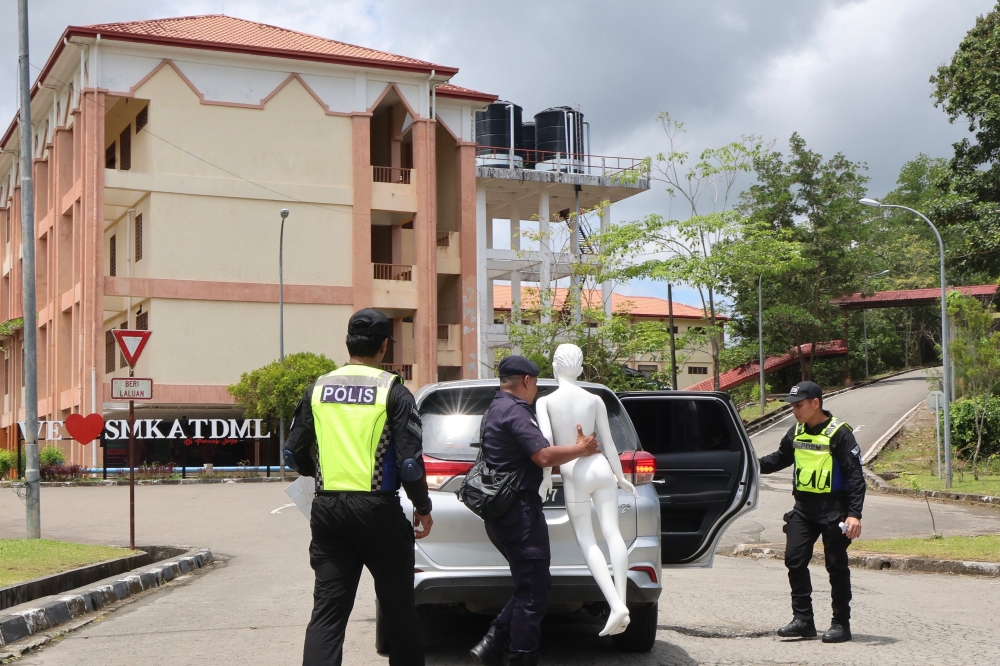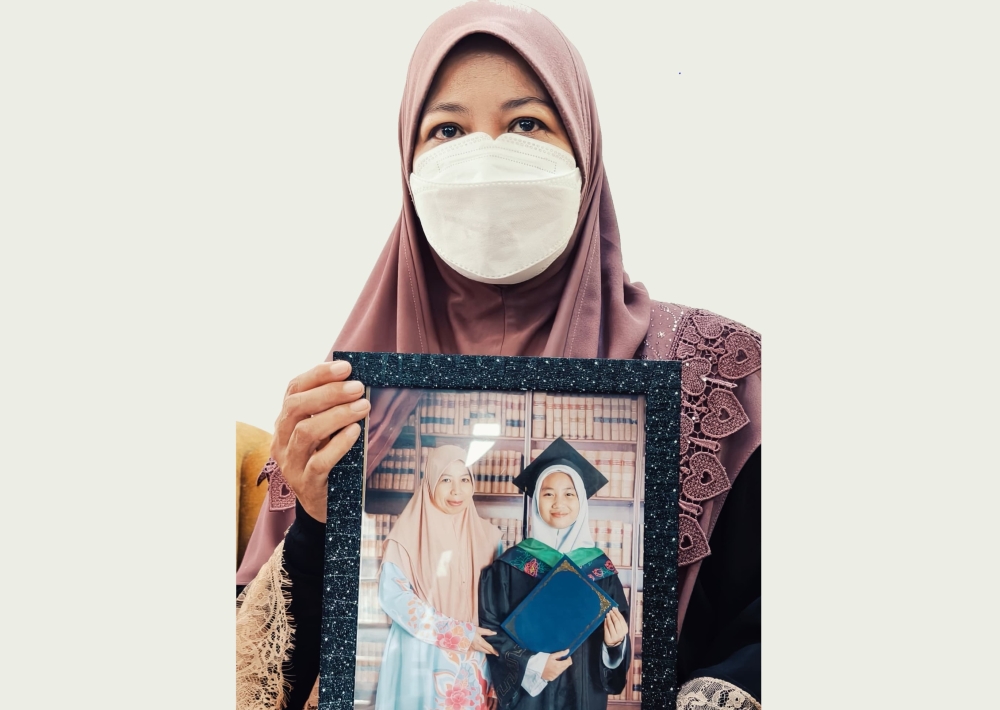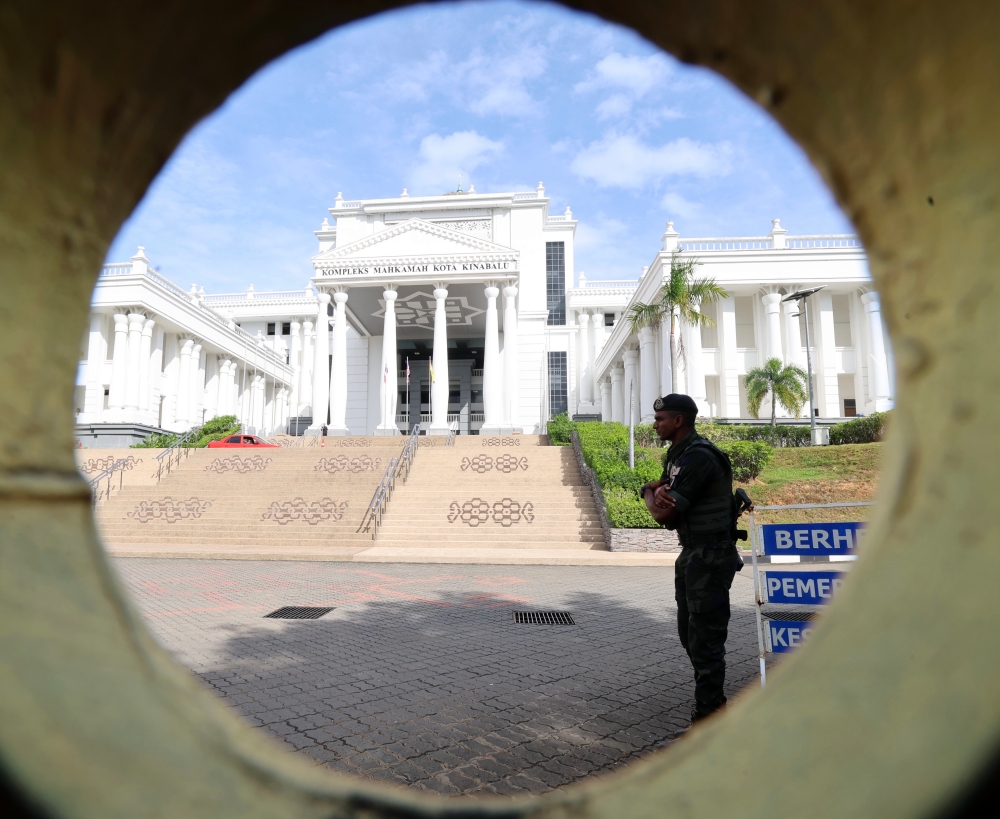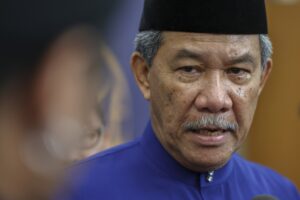KOTA KINABALU, Sept 13 — A week into the inquest into the death of 13-year-old Zara Qairina Mahathir, a clearer picture of the events surrounding her fall from SMKA Tun Datu Mustapha boarding school in Papar and the individuals involved has begun to emerge.
Still in its initial stage, the proceedings have shed some light on how the incident unfolded and how the school responded, but unanswered questions continue to hang over the case.
What has been established so far, according to witness testimonies
Timeline and circumstances surrounding her fall:
Zara Qairina was found unconscious at around 3.15am on July 16 on the ground floor of her hostel.
The first person to notice her fall was a senior student who was doing laundry, heard a loud sound, and alerted the night-shift security guard, Linah Mansoding.
Linah took the first and only photo of Zara Qairina lying on the ground, a crucial piece of evidence that has helped build the investigation. She also told the inquest that Zara Qairina was unconscious but still alive during her final hours at the school, and was gasping for breath at one point.
She was dressed in her school’s sports attire, with her shirt pushed above her chest. She was barefoot and not wearing a tudung (headscarf) at the time.
The impact of her fall caused fractures to her spine, arm, and legs, a severely broken ankle, and a head wound. She was bleeding from an open fracture on her ankle and the back of her head.
Zara Qairina was carried by the school’s head warden, with the help of three Form Four students, from where she was found to a distance away to wait for the ambulance.
By then, several other teachers and wardens were present, along with two other security guards.
The ambulance took her away at 4.11am.
Cause of death:
The official cause of death is severe traumatic brain injury with hypoxic-ischemic encephalopathy (HIE), a condition in which the brain does not receive enough oxygen (hypoxia) and blood flow (ischemia).
Dr Janefer Voo of the Queen Elizabeth Hospital’s Emergency and Trauma Department said that Zara Qairina was already in critical condition upon arrival at around 4.38am and was at the lowest possible level of consciousness.
A trauma alert was activated, and a multi-unit team diagnosed her injuries. She was intubated to help her breathe, administered ten types of medication to stabilise blood pressure, had sutures applied to the back of her head to control bleeding, and was placed in splints to prevent movement of her limbs.
A CT scan revealed acute subarachnoid haemorrhage (both hemispheres), subdural bleeding (interhemispheric fissure, tentorium cerebelli), tonsillar herniation at the foramen magnum, and severe neurological damage. Her other injuries were considered survivable.
She was admitted to the neurosurgery ward at 6.40pm on July 16 but showed no improvement and pronounced dead on July 17 at 1.07pm.
Doctors said they did everything possible in her final moments and informed the family of her critical condition before and after she died.
Zara Qairina’s death was certified by the neurosurgery ward.
Forensic pathologist Dr Jessie Hiu determined her injuries were consistent with a fall from a height. Although it is not certain from where or how Zara Qairina fell, it is almost certain she landed on her feet and most likely fell backward, hitting her head on the cement edge of a drain.
Medical experts also said there was no evidence that she had been physically abused.
Accusation of theft:
Linah revealed that Zara Qairina was accused of stealing RM300 and a bank card from a close friend the night before her fall.
While the friend did not name her directly, the accusation circulated among other students and reached Zara Qairina’s seniors and one of the wardens, identified at this stage as Ustaz Rizani.
The unsubstantiated claim may have resulted in a confrontation. In that case, five teenagers have been charged with using abusive language towards Zara Qairina on July 15 between 10pm and 11pm, the night before her fall.
The media were told they would not have access to the testimonies of the 35 underaged students of the same boarding school, who will be called later in the inquest.
Bullying culture:
The practice of “MA” (Mesyuarat Agung or “High Council”), where senior students would summon juniors for reprimands over perceived disrespect or infractions, came to light, with Linah admitting knowledge of such meetings.
Not smiling when passing by, dress code, or attitude could be reasons a student would be “summoned” and reprimanded by the council.
The practice had been prohibited by Form Five students, although it is unclear if it still occasionally takes place. The court heard it was possible that Zara Qairina was called for such a session after the theft accusation. It is also unclear whether teachers knew about the practice.
School handling of the incident:
The court heard that the school’s head warden, Ustaz Azahari, directed three students to help move Zara Qairina, then unconscious, from her original position closer to the hostel exit while awaiting an ambulance.
Linah testified that the ambulance arrived at around 4am, nearly an hour after Zara Qairina was found and emergency services were called.
After Zara Qairina was taken away, Azahari allegedly instructed students to clean up the bloodstains while a security guard held a torchlight in the dark.
Rain had washed away some blood at the site where she fell, although traces remained near where her feet had been.
Linah also told the Coroner’s Court that the school did not allow students to call or return home after the incident, shutting off public phones in the vicinity. However, other avenues for communication remained, including using the security guard’s phones.
One parent visited the school on the night of July 17 after being informed about Zara Qairina’s death but was not allowed to take their daughter or her friend home. They were allegedly allowed to leave the campus on July 18.
The washing machine theory:

Weighted mannequins have been used for simulations and reconstructions of the events leading up to Zara Qairina’s fall from her SMKA Tun Datu Mustapha boarding school in Papar, Sabah. — Bernama pic
The theory that Zara Qairina was put into a washing machine, either to harm her or remove evidence, has been dispelled following simulations with a weighted mannequin. Witnesses and lawyers said she could not have fit into the machine.
There were three top-loading washing machines at the scene, each with a 7.5kg load capacity.
An English teacher Siti Hajar Aflah Sharuddin, 39, admitted she made up the theory for content on her TikTok account on August 6. She was later charged but pled not guilty at the Magistrate’s Court in Sepang, Selangor, with spreading a rumour with intent to cause fear or alarm to the public. If convicted, she faces up to two years’ imprisonment, a fine, or both.
Still in question
Cause of fall: It remains unclear whether Zara Qairina’s fall was accidental, self-inflicted, or involved foul play. Despite simulations and reconstructions, it has yet to be determined how she fell, although the likelihood is that she fell vertically to land on her feet and was conscious at the time.
Bullying element: The inquest has yet to establish whether Zara Qairina was summoned to an “MA” session that night, or confronted about the alleged theft or for any other reason. Questions remain about what teachers and wardens knew of the “MA” practice and whether they had sufficient control over student discipline.
Zara Qairina’s mental state: Her journal entries indicate relationship troubles and reference “barcodes,” or self-inflicted cuts, but doctors found no evidence of such scars.
Delay in emergency response: Whether the hour-long wait for the ambulance or moving Zara Qairina before paramedics arrived affected her condition remains a question.
Handling of evidence: Moving the body and having students clean bloodstains before police investigations raises concerns about possible tampering or loss of critical forensic evidence.
Presence of Phenytoin: Traces of Phenytoin, an anti-seizure drug commonly prescribed for severe brain trauma, were found in Zara Qairina’s kidney tissue. None of the three medical witnesses testified that they administered the drug, raising questions about its unintended effects.
The larger picture: The inquest has completed its seventh day, hearing six witnesses so far. At least 68 witnesses, including 35 children, are scheduled to testify. Other witnesses yet to be deposed include her teachers, the principal, wardens, the investigating officer, a chemist, and Zara Qairina’s mother.
Lawyers have also requested a psychologist’s assessment of Zara Qairina’s state of mind at the time of her fall.
For her family and supporters, the inquest is not just about how Zara Qairina died, but also whether the school hostel environment was safe, properly supervised, and whether authorities handled the case appropriately.
The inquest is scheduled to resume on September 17–19 and September 22–30. It is expected to be extended beyond the stipulated dates.
Characters in the inquest

The inquest of 13-year-old Zara Qairina Mahathir began on September 3, 2025 at the Coroner’s Court in Kota Kinabalu, Sabah and is scheduled till September 30, 2025. — The Borneo Post pic
Coroner: Amir Shah Amir Hassan, a Sessions Court judge who took over from Azreena Aziz, who recused herself citing her address in Papar, where the school is located.
Zara Qairina Mahathir, 13 (deceased): The central figure, allegedly bullied, found unconscious with fatal injuries, and most recently accused of theft. Died on July 17 at Queen Elizabeth Hospital from brain injuries.
Zara Qairina’s parents: Allowed to participate as “interested parties.” Mother Noraidah Lamat is represented by lawyers Shahlan Jufri, Rizwandean M. Borhan, Mohd Luqman Syazwan Zabidi, Mohd Syarulnizam Mohd Salleh, and Farrah Nasser. The former lead counsel Hamid Ismail is no longer publicly representing her. Father Mahathir Hashim @ Marikin is represented by Sherzali Asli, Nurul Rafeeqa Afdul Mutolip, and Clarice Vyonne Conrad.
Conducting officers: Datuk Badiuszaman Ahmad, Nahra Dollah, Mohd Fairus Johari, Dana Arabi Wazani, Sofia Sawayan, and Dacia Jane Romanus. These government lawyers are responsible for putting together the witness list and evidence.
Unnamed alleged bullies: Five teenagers accused of bullying Zara Qairina on the night before her fall, allowed to participate as interested parties.
- The first accused is represented by Datuk Ram Singh, Joan Goh, and Prem Elmer Ganasan
- The second, third, fourth, and fifth accused are represented by Azhier Farhan Arisin, Abdul Fikry Jaafar Abdullah, Fareez Salleh, and Sylvester Kuan.
Witnesses who have testified so far:
- Forensic Pathologist Dr Jessie Hiu
- Document examiner/handwriting expert Nurul Atiqah Mohd Noh
- Emergency and Trauma Department Dr Janefer Voo
- Neurosurgery Department medical officer Dr Pavankumar Balachandran
- Crime Scene Investigator Maidon Bernadus
- Security guard on duty Linah Mansoding






